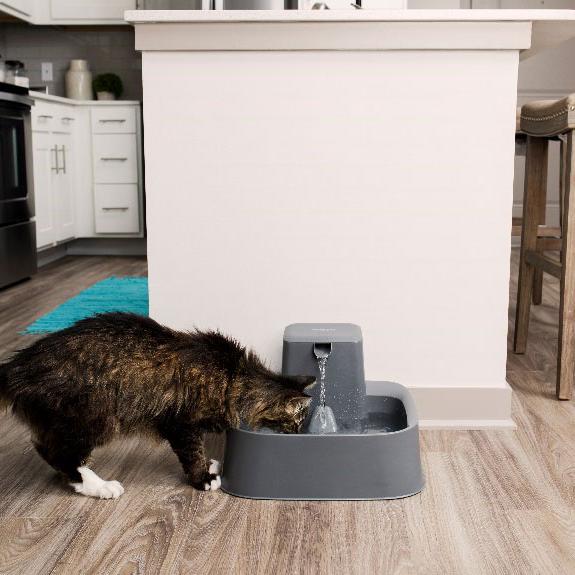 What are the adrenal glands and Addison's disease?
What are the adrenal glands and Addison's disease?
The adrenal glands are a pair of glands in people and animals that are located in the abdomen near each kidney. The adrenal glands produce hormones (i.e. cortisol and aldosterone) that control many functions in the body. These hormones keep the gastrointestinal tract and cardiovascular system (heart and vessels) working properly. They also help to maintain the water balance in the body and keep the electrolytes normal.
Addison's disease is typically caused by immune destruction of the adrenal glands resulting in a non-functional gland. It can also be caused by overdoses of medications to treat the opposite disease called hyperadrenocorticism or Cushing's disease. Most dogs with Addison's disease will stop producing both hormones (cortisol and aldosterone) while some will stop producing only cortisol.
Which dogs get Addison's disease? What are the symptoms?
Addison's disease typically occurs during middle age (2-7 years) but can occur at any age. It is more common in females than males.
The symptoms of Addison's disease can vary greatly and can include the following:
-
 Vomiting or regurgitation
Vomiting or regurgitation - Diarrhea
- Decreased appetite
- Lethargy
- Weight loss
- Increased thirst & urination
- Weakness
- Shaking/shivering
- Decreased stress tolerance
- Painful abdomen
- Collapse
Your dog may suddenly become severely ill or have more chronic, waxing and waning symptoms.
How is the diagnosis made?
Bloodwork is variable in dogs with Addison's disease. Electrolyte abnormalities (low sodium and high potassium) are the classic and most common changes. The high potassium levels cause a slowing of the heart rate and if severe, can cause the heart to stop. In some cases (i.e. "atypical" Addison's), the electrolytes will be normal but other labwork changes may make your veterinarian suspect the disease.
Common labwork changes include:
-
 Low sodium
Low sodium - High potassium
- Low chloride
- High phosphorous
- High calcium
- High kidney values
- Low protein levels (albumin)
- Low red blood cells
- Low blood sugar
If the labwork and symptoms are suggestive of Addison's disease, your veterinarian will likely run a resting cortisol or ACTH stimulation test to rule out or confirm the disease. A resting cortisol is a single, random blood cortisol level. If this value is high, then your dog does not have Addison's disease. If this value is low, your veterinarian will need to run an ACTH stimulation test to definitively diagnose the disease.
The ACTH stimulation test is performed by measuring the cortisol levels before and one hour after a medication is then given that stimulates the adrenal glands. Dogs with Addison's disease will have very low levels of cortisol before and after the adrenal glands are stimulated.
The cost of diagnosis is typically between $500-800.
What is the treatment?
If your dog presents in an acute crisis with severe symptoms of collapse and shock, he or she will need to be hospitalized and treated aggressively. Treatment usual beings with fluid therapy which will rehydrate your dog, bring up his/her blood pressure, and help to bring down the potassium level. Injectable steroids are given to replace the missing cortisol. Sometimes other medications are needed to protect the heart from the high potassium and to bring up the blood pressure up. Your dog may be hospitalized for several days depending on the severity of his/her condition.
 Long term treatment typically includes one or two different types of medication. Your dog's natural cortisol will need to be replaced with a daily pill (prednisone). This will need to be given for the rest of your dog's life. In dogs that are missing cortisol alone (atypical Addison's), prednisone is the only medication given. If your dog has the more typical form of Addison's, he or she will also require a second medication to replace the missing aldosterone. This can be given in the form of a daily pill (Florinef) or a monthly injection (DOCP). In time, you can learn to give this injection at home.
Long term treatment typically includes one or two different types of medication. Your dog's natural cortisol will need to be replaced with a daily pill (prednisone). This will need to be given for the rest of your dog's life. In dogs that are missing cortisol alone (atypical Addison's), prednisone is the only medication given. If your dog has the more typical form of Addison's, he or she will also require a second medication to replace the missing aldosterone. This can be given in the form of a daily pill (Florinef) or a monthly injection (DOCP). In time, you can learn to give this injection at home.
The amount of medication given should be just enough to replace what is missing and should not cause side effects at appropriate doses. Side effects could include increased thirst and urination and increased hunger.
The cost of treatment varies on the severity of the symptoms. Treatment for an acute crisis can range from $1000-3000. Long term management costs between $20-200/month depending on the medications required and the size of the dog. Larger dogs require more medication and therefore cost more to treat.
What is the prognosis?
If left untreated, dogs with Addison's disease can become severely ill and even die. Dogs that are treated appropriately have an excellent prognosis and can live normal and happy lives! If your dog is showing symptoms of Addison's disease, talk to your veterinarian.







